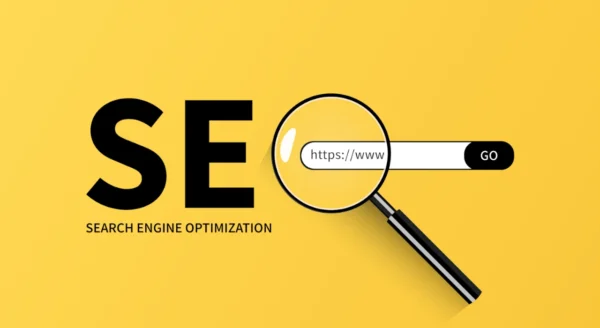Dr. Apurvakumar Pandya, Co-Lead, Centre for Quality Improvement and Patient Safety, Indian Institute of Public Health Gandhinagar.
Dr. Medha Wadhwa, Lead, Centre for Quality Improvement and Patient Safety, Indian Institute of Public Health Gandhinagar.
In today’s times, where every individual seeks personalisation and customisation of services according to their needs, imagine a healthcare marketing landscape where you are bombarding everyone with the same message. Instead, you have a direct, personalised conversation with each patient group. This pinpoint accuracy is the magic of behavioural targeting in healthcare campaigns. With the help of behavioural targeting, you can create audience segmentation according to their preferences. So let’s understand different nuances of behavioural targeting in Marketing.
What is Behavioural Targeting in Healthcare?
Behavioural targeting is seen in patients and healthcare providers, where the browsing history is tracked to identify common interests. The use of these analytical tools helps identify the user according to a demographic and psychographic profile. The demographics include patient information such as age, location, gender, income, education, occupation, etc. Psychographics are deeper and reveal subjective aspects of a person, which include interests, values, lifestyles, personality traits, attitudes, opinions, etc. This can help in preparing tailor-made campaigns to create compelling user messages.
Hitting the Mark: Personalization with Patient Data
Behavioural data can be leveraged for impactful healthcare marketing using already known behaviour change communication strategies. But is this the same as retargeting? A thin line difference exists between these two, where re-targeting is done to a particular user based on his/her preferences, which are assessed by analysing his/her browsing history. Behavioural targeting is much broader and can be used on third-party data to create an impact on the first party.
For example, a mother of a newborn searches for diapers online. This can help the nearby paediatricians target the mother by advertising their USPs in the area of newborn vaccination or nutrition. Personalised emails can be sent for a deeper patient engagement, reinforcing an individual to seek the recommended services. And It’s Done!! This can also be used to identify the tone, vocabulary, communication style and demographic information of the users, which can be used to send these personalised messages.
What are the benefits?
A) The healthcare provider is able to identify the right audience who are interested in the services, hence the likelihood of seeking further information increases;
B) Constructive engagement of audience
C) Targeting audience reduces wasted marketing spend by focusing on individuals genuinely interested in services; and
D) The data can be used to identify preferred languages for messaging, ensuring inclusivity and better reach within the diverse population.
Behavioural targeting requires an ethical consideration. While behavioural targeting offers immense benefits, it’s crucial to prioritise data privacy and ethical concerns. Transparency in data collection and usage is essential. Patients should have control over their data and should be provided opt-out options. Furthermore, healthcare marketing should not harm patients by making misleading claims or disseminating misinformation. Patient safety needs to be central to behavioural targeting for healthcare marketing.
A) Let us provide an example to explain the strategies for Behavioural targeting. Conduct in-depth patient behaviour research.
This shall help identify the patients with their online behaviours and preferences, which will lead to resonating at a personal level with patients and healthcare providers, for example. A hospital in Ahmedabad uses the concept of behavioural targeting when it analyses the different searches related to the nutritional problems of their child. This information can segment the audience according to tone, vocabulary, and age.
B) Crafting Personalised Messages: Marketing content focusing on the different preferences tracked can be developed to offer customised solutions to individual problems. The level of engagement can also be decided based on the research carried out on data. The different media that deliver e-content marketing can be leveraged using the data.
C) Monitoring and Optimization: Continuously monitoring and optimising campaigns are crucial to the success of behavioural targeting strategies. Tracking key performance metrics such as click-through rates, conversion rates, and engagement levels provides valuable insights into campaign effectiveness.
Using behavioural targeting, healthcare providers can design compelling campaigns that educate, empower, and ultimately improve patient outcomes. Remember, successful healthcare marketing resonates with the choices and preferences of the patient groups to hit the bull’s eye.
About Authors:
Dr. Apurvakumar Pandya is a trained psychologist, social & behavioural scientist and a faculty at the Indian Institute of Public Health Gandhinagar (IIPHG). Dr. Medha Wadhwa is a healthcare management professional, a quality improvement & patient safety (QUALIPS) expert, and a faculty member at IIPHG. Both lead the Centre for Quality Improvement and Patient Safety (QUALIPS) at IIPHG.

9 Ways Digital Technologies Have Revolutionized Healthcare Marketing and Branding
Digital technology has revolutionized healthcare marketing and branding, offering numerous opportunities to connect with patients, enhance brand visibility, and provide better care. Here are several ways in which digital technology can be leveraged in healthcare marketing and branding

The Pulse of Progress: Adapting to the New Era of Healthcare Marketing
Marketing is pivotal in bridging the gap between healthcare providers and consumers. With rapid technological advancements, evolving consumer behavior, and regulatory changes reshaping the landscape, understanding these shifts is crucial for any healthcare marketing professional.

10 Strategies for an Effective Marketing Message
Consider performing extensive research on your target audience. This may help you find key information that can influence your audience in favour of your product or service. Valuable information may include their likes and dislikes, their pain points, what services they’re interested in.

The Ultimate Guide to Hospital Website SEO
With the rapid growth of internet usage and smartphone adoption in India, having a strong digital presence has become imperative for healthcare organisations. According to Statista: the number of internet users in India was forecast to continuously increase between 2023 and 2028 by 265.1 million users (+26.29 percent).

From Clicks to Care: Why Healthcare Content Marketing Matters
In an era where information is at our fingertips, effective communication has never been more important! How do healthcare organisations stand out in an increasingly competitive landscape? The art (and science!) of content marketing is a valuable tool.

The Imperative Role of Healthcare Marketing in the Healthcare Industry
In an era of rapid technological advancements and increasing patient empowerment, healthcare marketing has emerged as a critical strategy for healthcare providers. Far from being just a commercial endeavour, effective healthcare marketing has the potential to improve patient outcomes, enhance patient engagement, and drive growth for healthcare organisations.

